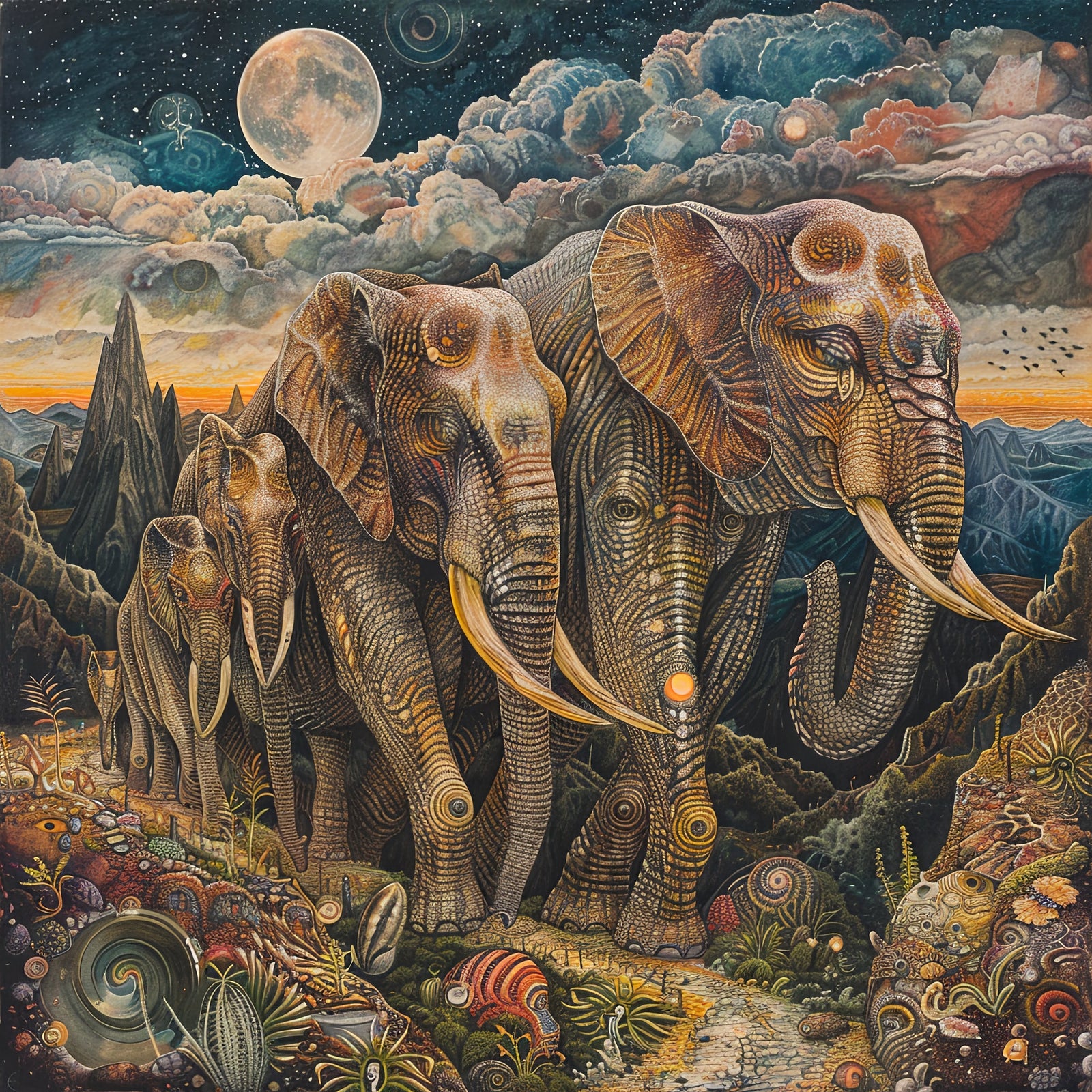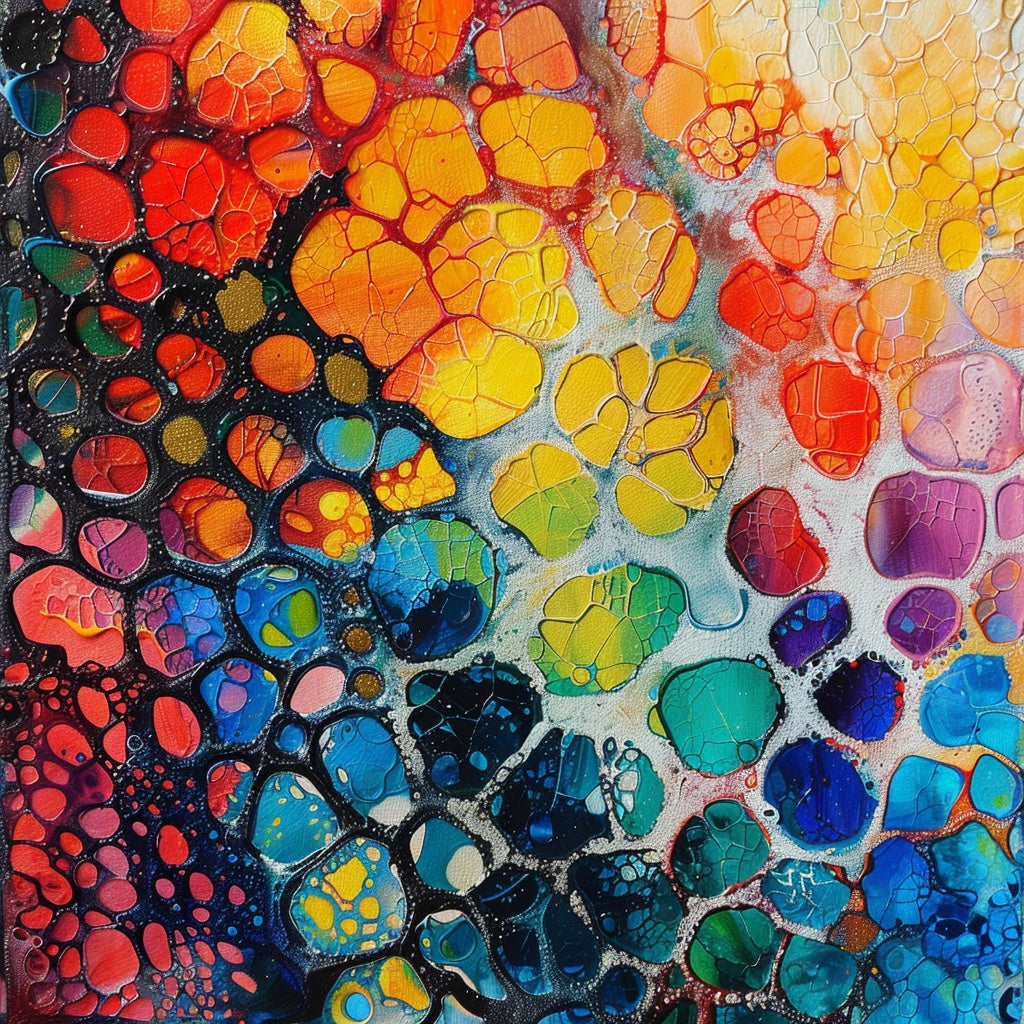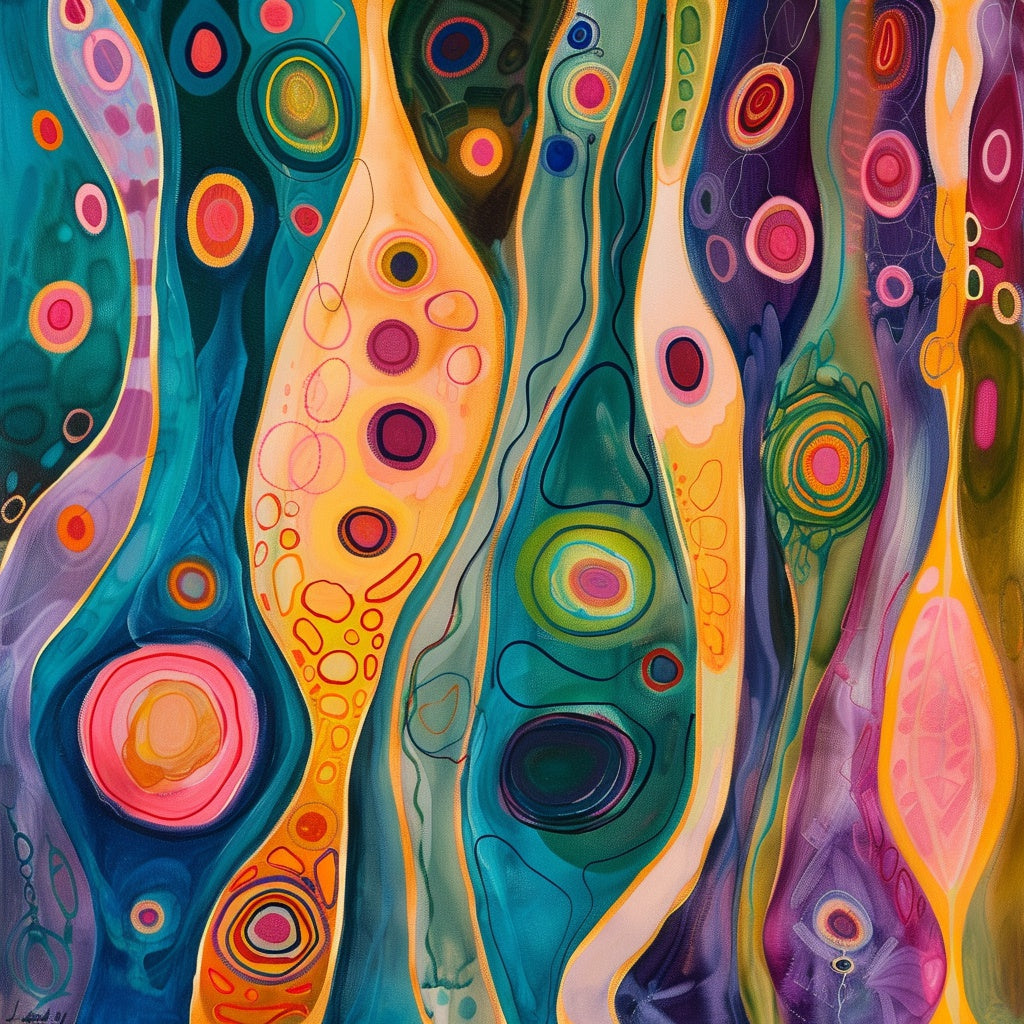AI Art Generation: A Deep Dive
The world of art is undergoing a significant transformation thanks to the advent of artificial intelligence. AI art generators have become increasingly popular, offering tools that allow anyone to create unique images from text prompts [1]. This article explores the fascinating processes and techniques behind AI art generation, providing a comprehensive overview of how these tools work and their creative potential.
Table of Contents
- Understanding the Basics
- The Role of Training Data
- Key AI Models for Art Generation
- Techniques for Guiding AI Art Generation
- Examples of AI-Generated Art
Understanding the Basics
The use of artificial intelligence in art is not entirely new. As early as 1968, artists experimented with programming languages to produce randomly generated artwork [1]. Today's AI art generators are powered by complex algorithms, often based on **neural networks**, that learn from vast datasets of images and text [1]. These algorithms are designed to identify patterns and relationships between words and visual elements [1]. When a user enters a text prompt, the AI uses its learned knowledge to generate an image that matches the given description [1].
The Role of Training Data
The foundation of AI art generation lies in **training data**. AI models learn by analyzing millions of images paired with corresponding text descriptions [2]. This process enables the AI to understand how words relate to visual features, such as shapes, colors, and textures [2]. The more diverse and comprehensive the training data, the better the AI can understand and respond to various prompts [2].
For instance, if an AI model is trained on a dataset of landscapes with descriptions like "mountainous," "serene," or "vibrant," it will learn to associate these words with specific visual traits [2]. When prompted with "a serene mountain landscape at sunset," the AI can generate an image reflecting these elements [2]. Before an AI art generator can be trained, the data needs careful preparation, which includes:
- Categorization: Images are grouped into relevant categories such as portraits, landscapes, or abstract art [3].
- Labeling: Each image is labeled with descriptive keywords that capture its key features, like "cat," "tree," "smiling," or "red" [3].
- Organization: The data is organized into a structured format that the AI model can easily access and process [3].
These steps ensure the AI model receives well-organized and informative data, which is crucial for effective learning and generating high-quality images [3].
Key AI Models for Art Generation
Two primary types of AI models dominate the art generation landscape: **Generative Adversarial Networks (GANs)** and **diffusion models** [4].
Generative Adversarial Networks (GANs)
GANs consist of two neural networks: a generator and a discriminator [4]. The generator creates images, while the discriminator evaluates them, trying to distinguish between authentic and AI-generated photos [4]. These two networks are trained together in a zero-sum game, where the generator attempts to maximize its score by creating more realistic images, and the discriminator tries to minimize its score by identifying the AI-generated pictures [4]. This adversarial process pushes the generator to produce increasingly realistic images that can fool the discriminator [4].
Different types of GANs exist, each with unique strengths and weaknesses [5]:
- Deep Convolutional GAN (DCGAN): Uses convolutional layers to process images, making it effective for generating high-resolution images [5].
- Conditional GAN (CGAN): Allows for greater control over the generated images by conditioning the generator on additional information such as text prompts or class labels [5].
- StyleGAN: Known for its ability to generate highly realistic and diverse images, especially of faces [5].
GANs are known for their ability to create highly realistic and detailed images and have been used to generate various forms of art, including portraits, landscapes, and abstract pieces [6].
Diffusion Models
Diffusion models operate by gradually adding noise to an image until it becomes pure noise. Then, they learn to reverse this process, starting with noise and progressively removing it to generate an image [6]. This technique enables diffusion models to create images from scratch, guided by text prompts [6].
Like GANs, there are various types of diffusion models [7]:
- Stable Diffusion: One of the most popular diffusion models, known for its ability to generate high-quality images with a high degree of control [7].
- Stable Diffusion XL: An improved version of Stable Diffusion with a larger network and higher native resolution, capable of generating even higher quality images and legible text [7].
- Flux.1 dev: Noted for its excellent realistic images and prompt adherence [7].
Diffusion models have gained popularity for generating high-quality images with a high degree of control. They are used in popular AI art generators such as DALL-E 2 and Stable Diffusion [7].
Techniques for Guiding AI Art Generation
While AI art generators can produce impressive results independently, artists can employ various techniques to guide and control the output. These techniques can be thought of as providing creative direction to the AI [8].
Prompts and Negative Prompts
Prompts are text descriptions that guide the AI in generating images. The more specific and detailed the prompt, the better the AI can understand your vision [8]. Effective prompts often include the following elements:
- Subject: The main focus of the image (e.g., a cat, a person, a landscape) [9].
- Action/Pose: What the subject is doing (e.g., running, dancing, sitting) [9].
- Setting: Where the scene takes place (e.g., a forest, a city, a beach) [9].
- Style: The artistic style (e.g., photorealistic, impressionist, abstract) [9].
- Mood/Atmosphere: The emotional tone (e.g., happy, sad, mysterious) [9].
For example, an effective prompt might be: "Envision a captivating realistic portrait of a woman, reminiscent of the Gothic era's mystique" [9]. In contrast, an ineffective prompt might be "Create an image where the point of view is looking down, and a family of four, a pirate, and a mermaid is looking back up" [9].
In addition to descriptive prompts, users can use "negative prompts" to specify what they want to exclude from the generated image [10]. For example, if you don't want the AI to include human figures in the image, you could add "no humans" to the negative prompt. This can be a powerful tool for refining the AI's output [10].
Style Transfer
Style transfer is a technique that applies the artistic style of one image to another [11]. For example, you could take a photograph and make it look like a painting by Van Gogh or Picasso [11]. This technique allows artists to experiment with different styles and create unique combinations [11].
Here's a simplified analogy: Imagine you have a photo of your house and a painting by Monet. Style transfer is like taking the brushstrokes, colors, and overall feel of the Monet painting and applying them to your house photo, creating a version of your house that looks like a Monet painting.
Parameter Tuning
Many AI art generators allow users to adjust parameters such as color schemes, lighting, and level of detail [12]. By fine-tuning these settings, artists can refine the output and achieve the desired aesthetic [12].
Tools such as the CLIP Interrogator can reverse engineer real images and generate text prompts. It analyzes an image and provides a text description that captures its key features and style [12]. This can be a valuable resource for artists seeking inspiration or new ways to describe their vision to an AI art generator [12].
Examples of AI-Generated Art
AI art has been used to create a wide range of impressive works [13]:
- "Portrait of Edmond de Belamy": An AI-generated portrait, created by the Obvious collective, that was the first AI artwork to be sold at a major auction house [13].
- DeepDream: Google's DeepDream creates dream-like, psychedelic versions of existing images [13].
- "Théâtre D'opéra Spatial": An AI-generated artwork that won first place in the digital art category at the Colorado State Fair [13].
- "Digital Grotesque": A 3D-printed sculpture, created by Michael Hansmeyer and Benjamin Dillenburger, featuring intricate details and organic shapes generated using an algorithm [13].
- "Zone Out": A mesmerizing animation by Zolloc, created using 3D animation software and AI, featuring abstract shapes and patterns that move and morph in captivating ways [13].
These examples demonstrate the creative potential of AI art generation and its capacity to push the boundaries of artistic expression [13].
In conclusion, AI art generation is a rapidly evolving field revolutionizing how we create and experience art. By understanding the underlying processes, techniques, and models, we can fully appreciate the power and possibilities of this new form of artistic expression.
Footnotes
[1] What is AI art & how does it work? - Adobe Firefly
[2] What is AI Art? How Art Generators Work (2025) - Elegant Themes
[3] Where Do AI Art Generators Get Their Data? - NightCafe
[4] AI Image Generation Explained: Techniques, Applications, and Limitations - AltexSoft
[5] The top AI art generators | Zapier
[6] Guide to Generative Adversarial Networks (GANs) in 2024 - viso.ai
[7] Art Generation using GANs | Saturn Cloud
[14] PixelBrush: Art Generation from text with GANs - CS231n - Stanford University
[13] Generative adversarial networks (GANs) | AI and Art Class Notes - Fiveable
[8] How AI Creates Art - A Gentle Introduction to Diffusion Models | Weaviate
[9] Diffusion Models: A Practical Guide - Scale AI
[11] Stable Diffusion Models: a beginner's guide
[12] 10 Mind-Blowing Examples of AI Generated Art - ClickUp
keep_pinSave to note copy_all thumb_up thumb_down



Leave a comment (all fields required)